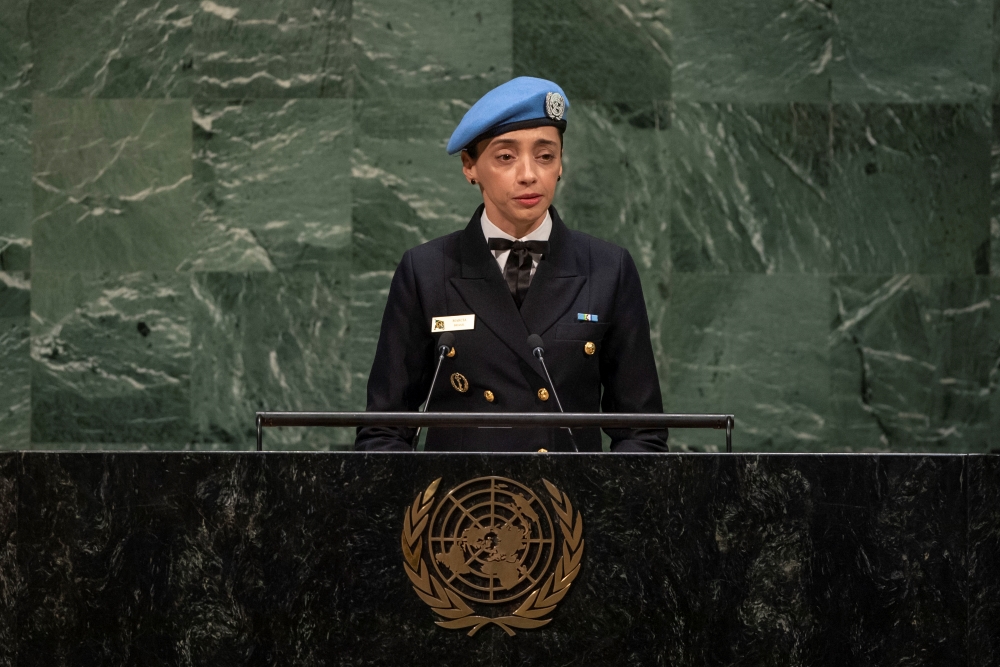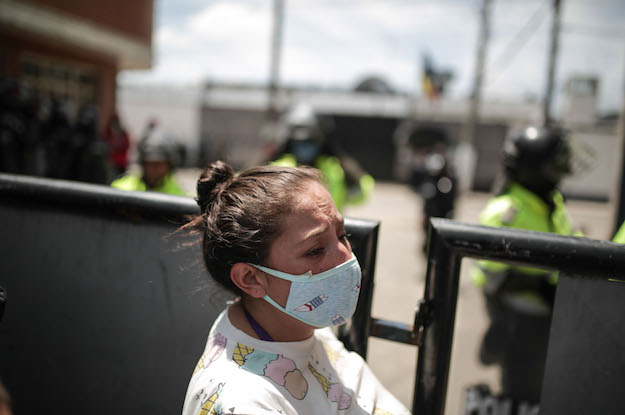This article is adapted from AQ’s special report on Latin America’s armed forces.
Whether because of prejudice, paternalism or other factors, women in the military still face skepticism in Latin America.
Forces around the region began enlisting female troops in the 1980s, but they were mostly kept out of combat roles or frontline operations. High-ranking female officers in Latin America are few in number. Some have served as doctors, teachers and computer scientists, but training for roles directly involved in security is still almost exclusively left for males.
That’s slowly changing in some countries, Brazilian Navy Lieutenant Commander Marcia Braga, 45, told AQ. “We are not there yet, but the trend is to normalize the presence of female officers in front-line roles,” she said. In 2019, Braga received the UN Military Gender Advocate of the Year award after her work in the peacekeeping operation in the Central African Republic (MINUSCA), in which Brazilian forces participated, led the Security Council to recommend increasing female participation in conflict zones.
Braga joined the Navy after college as an information technology analyst working with maritime traffic control systems right after September 11, 2001, which put militaries everywhere on alert. “There was heightened awareness and rapid upgrades happening,” said Braga, who was the only female on that team. Later, as a gender advisor for MINUSCA, she served side-by-side with female combatants.
Braga spoke to AQ about why mixed-gender battalions are more effective in war zones, how male troops are dealing with change, and her efforts to give women troops “the information they need to be able to choose their path.”
This interview has been translated and edited for length and clarity.
Americas Quarterly: What is the role of a gender advisor in a military setting?
Marcia Braga: We use a gender perspective to understand how women and men are being affected by conflict, how boys and girls are being affected. The work is not only for women — everyone thinks it is about women and girls, but it is for all groups. Our assessment helps map out sensitive areas, locate vulnerable groups and increase military presence in sensitive areas.
AQ: Did this job change your view on female roles in the armed forces?
MB: It confirmed my view. Whether male or female, what matters is the profile and the commitment. I had direct contact with combatant women inside many battalions. Women out there with weapons, patrolling the terrain. There was no difference at all in the effectiveness of the patrol, but the opposite. With the equipment on — vests, helmets — all soldiers look the same. Out there we were just women and men doing the same work.
AQ: Your strategy there has been presented to the Security Council to include in protocol. What was different?
MB: I started by evaluating all the ways the conflict affected the local population. My focus was to understand which groups were more vulnerable, and the most sensitive areas. The first step was to train a network of soldiers under the gender perspective and start the flow of information from the ground to command. I would bring them with me in day and night patrol routes to see who was moving and when. It became clear women and children were the most vulnerable, as they had to be out to fetch water and food.
If you have an all-male patrol in an area with an absurd history of sexual violence, you wouldn’t get the information from the locals about where the armed groups were, where they were attacking. In areas where we had mixed troops, we were much more effective.
On the border with Sudan, an all-women escort team came to greet me wearing of course their helmets and vests, but also a pink scarf, in respect to the local Muslim community. Their posture was very professional but at the same time with that feminine side — I thought it was amazing. The pink scarf did not impede their work; the opposite, they were incredibly well received by the local population.
AQ: What was the dynamic in the barracks with mixed troops?
MB: I lived with several different battalions and the ones that were mixed — mostly African regiments — you’d see during meals all soldiers just chatting about local issues, operations. There were pickup soccer games, men and women playing together. What I saw was integration — this is the best word to describe it.
The objective of having women in a battalion is not to just tick a quota. When we think of increasing the participation of women, it is to increase this interaction, to have this mixed composition just like in society — all groups need to be represented.
AQ: Do you see this discussion, of whether women can be in the frontline, becoming obsolete?
MB: Those still opposed to women in combat also use arguments related to traditional warfare. Today’s conflicts are very different, with armed groups mixed with civilian population and it is very clear that having women increases efficiency.
The main thing is equal opportunities. Not all women will want this as not all men do. But to have a female as a ship captain, a force commander, will depend on having women with that kind of training reaching higher ranks. In Brazil, the first women graduated from the Naval College in 2017, it will take some time until they reach command. With equal access it will start to become normal to see women in frontline roles.
I think the award I received from the UN helped a lot. I am now chief of the Naval Peace Operations training center and the internship offered for women in peace operations had more than 130 military applicants compared to less than 50 last year. There is growing awareness, but we also need to give women the information they need to be able to choose their path.









